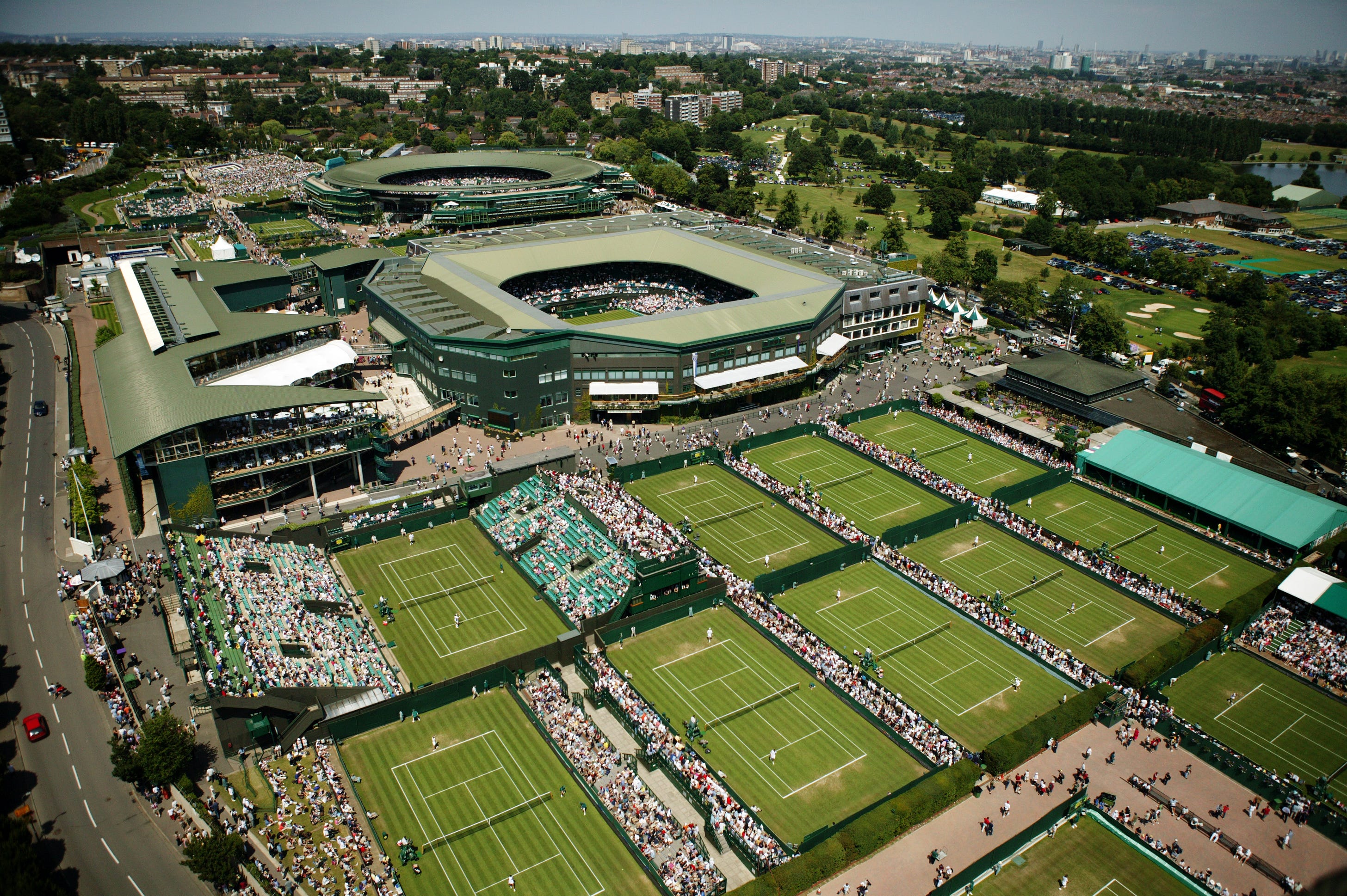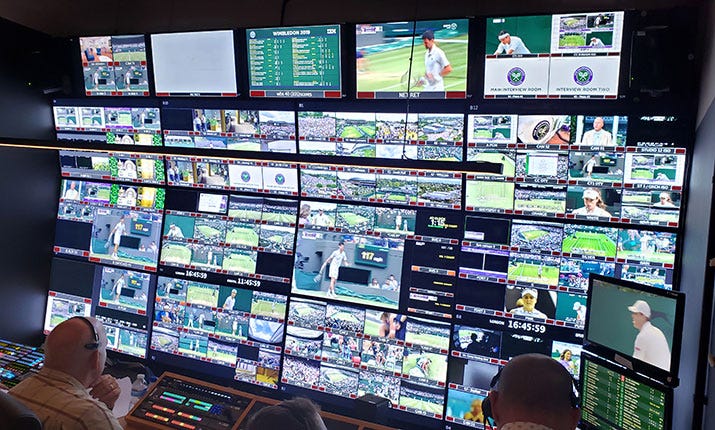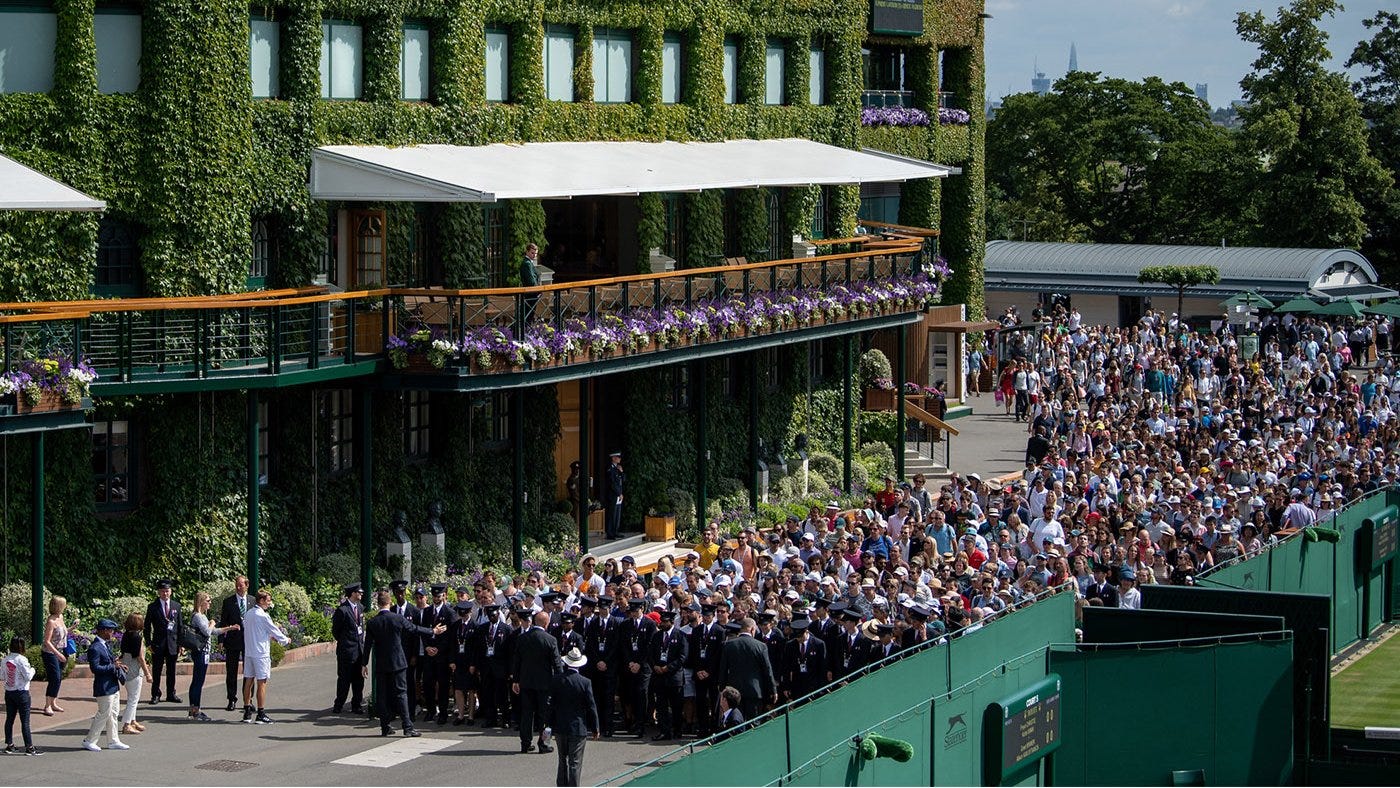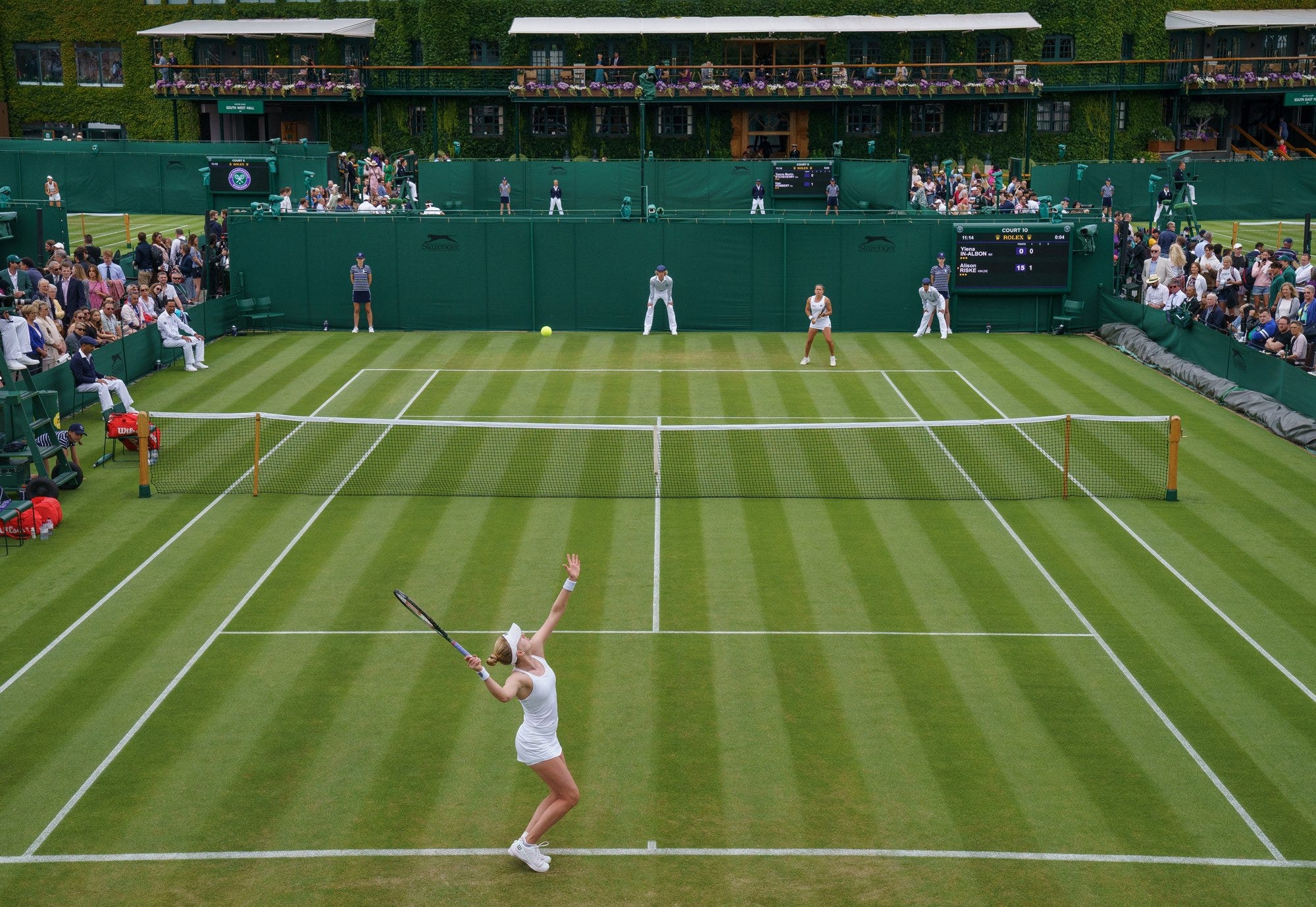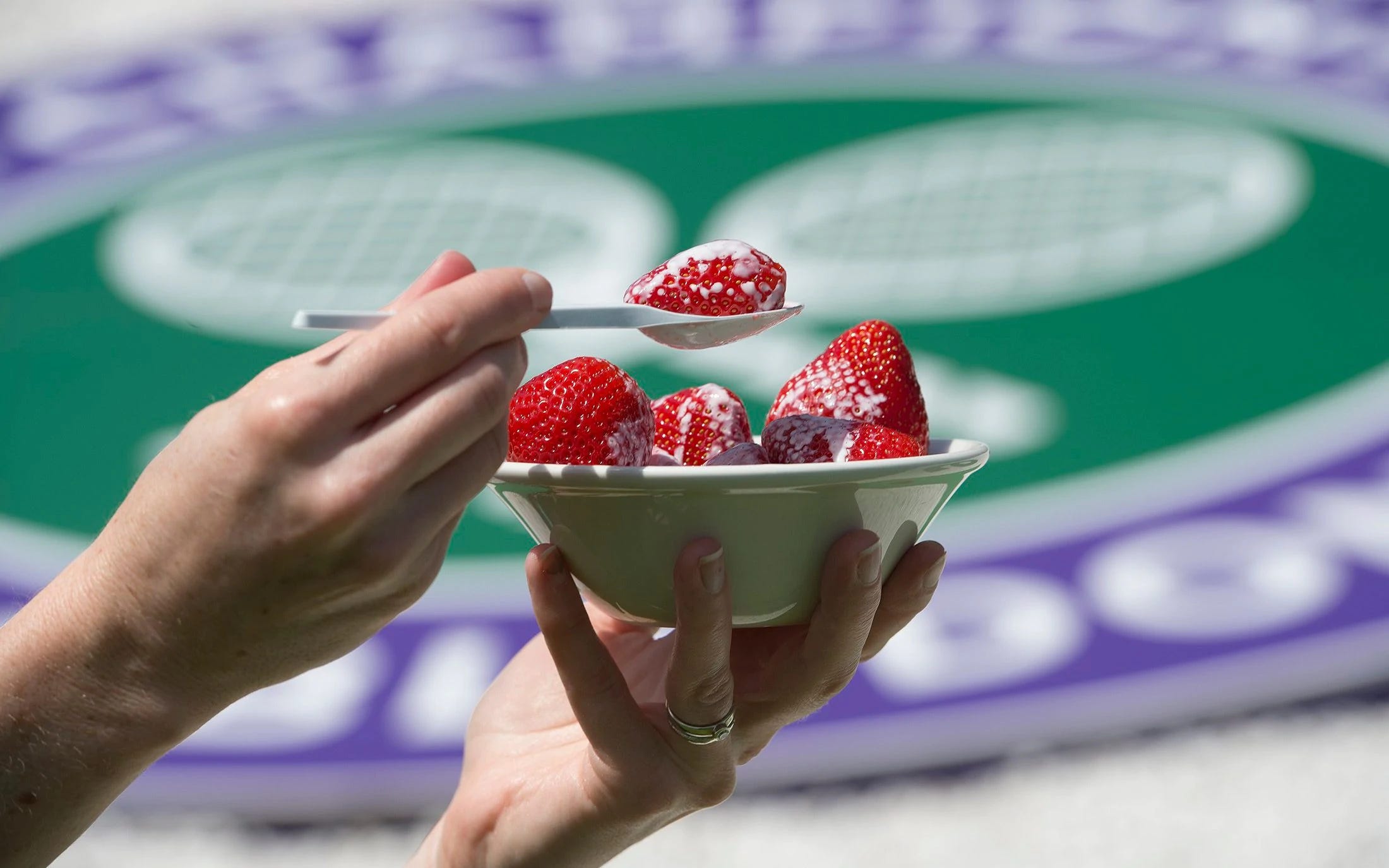Why Wimbledon Leaves $75 Million On The Table
Huddle Up is a 3x weekly newsletter that breaks down the business and money behind sports. If you are not already a subscriber, sign up and join 100,000+ others who receive it directly in their inbox each week. This Newsletter is Sponsored By ButcherBox!I’ve been ordering from ButcherBox for a few years now, and it’s the single best solution I’ve found to save time while guaranteeing the quality of your food. ButcherBox delivers 100% grass-fed grass-finished beef, free-range, organic chicken, humanely raised pork, and wild-caught seafood directly to your doorstep. Yes, it’s literally that easy — and it tastes incredible! So ditch the butcher lines today and guarantee the freshness of your meat with ButcherBox. And here’s the best part: If you sign up today, ButcherBox is offering all Huddle Up readers 2 lbs of ground beef for FREE every time they order over the next year. So sign up using the link below, and everyone in your household will thank you later. Friends, Wimbledon is one of the world’s most exclusive sporting events. Held at the All England Lawn Tennis Club (AELTC) in London, England, the historic tournament first took place in 1877 and is the world’s oldest tennis tournament. The grass courts are mowed, painted, and mopped every morning, leaving behind a pristine, 100% perennial ryegrass mix cut to precisely 8 mm in height at all times. Every player wears white from head to toe. And security at the club is so tight that 8x Wimbledon champion Roger Federer was mistakingly denied access last year. But this history and prestige are exactly what makes Wimbledon so unique. It’s like the Masters or the Monaco Grand Prix; you must see it to believe it. So today, we’ll dive into the business behind tennis’ most famous event, including how a private club with fewer than 500 members makes nearly $60 million in profit each Summer — and why they intentionally leave $75 million on the table. Wimbledon is unique because, unlike other major sporting events such as the Super Bowl, World Cup, Masters, or Olympics, the All England Lawn Tennis and Croquet Club (AELTC) produces a 30+ page annual report breaking down its finances. For example, AELTC’s latest report says the Wimbledon tennis tournament brought in $440.5 million in revenue to the club and a profit of $58.7 million (~13% margin). Now, AELTC doesn’t break these numbers down much further than that. But based on the previous reporting by Forbes, the individual categories probably look like this. Estimated revenue breakdown for Wimbledon 2022
So, in addition to being one of the world’s most exclusive sporting events, Wimbledon is also one of the world’s most lucrative sporting events. But similar to the Masters, Wimbledon could potentially make much more money, with some estimates suggesting the tournament is intentionally leaving roughly $75 million on the table. Wimbledon’s Global Broadcast RightsLike many other large-scale sporting events, Wimbledon makes most of its money selling global broadcasting rights. For example, an estimated $246 million of their $440 million in revenue (56%) currently comes from broadcasting agreements — both domestically in the United Kingdom and internationally in countries like the U.S. But the interesting part is that ESPN currently pays much more for the U.S. Open ($75 million annually) than Wimbledon ($42 million annually). ESPN: U.S. Open vs. Wimbledon U.S. Broadcast Deals (source)
Most of this can be explained by the fact that the U.S. Open is a domestic tournament for ESPN versus Wimbledon being an international tournament. But still, it’s super impressive Wimbledon can command such a high number for its international rights alone — because their domestic TV deal with BBC pays 2-3x that number annually. And Wimbledon isn’t the only one getting paid big bucks for TV appearances. In 2017, it was revealed that BBC paid John McEnroe between $210,000 and $281,000 for 30 TV appearances during the tournament. BBC drew criticism from this report because 1) BBC is a taxpayer-funded network, and 2) McEnroe’s salary was 10x more than what Martina Navratilova was getting paid by the same network (BBC). But not much changed, and McEnroe has continued to work with BBC each year since. Wimbledon’s Ticket Sales Bring In $70 MillionTicket sales are Wimbledon’s second-largest revenue driver, but it’s also one of the areas where they leave a lot of money on the table. For example, Wimbledon broke a record last year when 515,164 people attended the tournament over two weeks. That brought in roughly $70 million in revenue. But Wimbledon has refused to make its courts bigger over the years, and the tournament attracts 115,000 fewer fans than the 2023 French Open (630,000), 325,000 fewer fans than the 2023 Australian Open (840,000), and 373,000 fewer fans than the 2022 U.S. Open (888,000). Main Court Max Capacity Seating
Furthermore, Centre Court tickets tend to rise in value each day of the tournament, while grounds passes usually decline in price as the tournament progresses. Centre Court Ticket Prices
Ground Pass Ticket Prices
Wimbledon also issues Debentures every five years. This system provides people with an allocation of Wimbledon Debenture tickets for every day of The Championships for five years. And the money raised through the sale of Debentures helps fund the development and upkeep of the Wimbledon grounds. But regardless, with primary market ticket prices ranging from just $10 to $324, Wimbledon could easily raise prices and make tens of millions more in revenue. Wimbledon’s (Long-Term) Sponsorship StrategyAfter attending Wimbledon or watching it on TV, most people probably couldn’t name a single sponsor of the event—and that’s how they want it. Wimbledon is estimated to leave tens of millions of dollars on the table. That’s because, unlike other tournaments (The U.S. Open, etc.), Wimbledon favors long-term partners and intentionally limits each sponsor’s exposure in public. For example, Wimbledon has 14 official sponsors this year — Slazenger receives the most inventory and has sponsored the event since 1902 — but logos on most courts are black, which are barely visible when situated next to the lush green courts at Wimbledon. And even though the logos on Centre Court and Court No. 1 are white, they are small and hardly visible to anyone that isn’t situated within the first few rows. “Our clean court philosophy is at the heart of our brand,” AELTC’s commercial and media director Mick Desmond previously told Forbes. Put simply, Wimbledon’s brand is clean, green grass courts. So they intentionally limit the number of partners they work with and often accept less money, enabling them to control the terms of the partnership and optimize for long-term relationships over short-term cash. Wimbledon’s Famous Concessions & MerchandiseConcessions and merchandise may represent just 12% of Wimbledon’s tournament revenue, but the category still brings in more than $50 million annually. The majority of this comes through merchandise. For example, AELTC sells its Wimbledon merchandise online, unlike The Masters, and it’s not cheap — shorts, t-shirts, sweatshirts, and jackets range from $50 to more than $250 per item. In total, Wimbledon will typically process about 155,000+ merchandise transactions over two weeks, with 450,000+ products being sold.
But don’t forget about concessions, either. AELTC reportedly sells around 190,000 servings of its famed strawberries and cream annually. And here’s the best part: It will only cost you $3 per serving, despite the U.K. seeing record inflation levels. So there you have it — that’s how a 500-member private club in the suburbs of London brings in nearly $450 million during two weeks each summer. And while it’s true that Wimbledon could make more than $500 million if they really wanted, the club feels it’s more important to maintain control and keep an exclusive feeling. Ps. Read below for some conversation starters with your family and friends! If you enjoyed this breakdown, please consider sharing it with your friends. My team and I work hard to consistently create quality content, and every new subscriber helps. I hope everyone has a great day. We’ll talk on Friday. Listen to the Joe Pomp Show on Apple or Spotify. Interested in advertising with Huddle Up? Email me. Your feedback helps me improve Huddle Up. How did you like today’s post? Loved | Great | Good | Meh | Bad Conversation Starters: The most interesting things you need to know
And although there hasn’t been a significant change to the grass courts at Wimbledon in 20+ years, the increasingly hot British summers have dramatically changed the condition of the soil, making the grass surface feel much closer to hard & clay courts. For example, statistics website Tennis Abstract analyzed data from over 12,000 matches and found that rallies on grass used to be 0.75 shots shorter than hard courts and 1.75 shots shorter than those on clay. But since 2016, the grass and clay have converged, with grass rallies now lasting just 0.45 shots less than hard court rallies and 0.61 shots less than on clay, per the Wall Street Journal. Huddle Up is a 3x weekly newsletter that breaks down the business and money behind sports. If you are not already a subscriber, sign up and join 100,000+ others who receive it directly in their inbox each week.
© 2023 |


